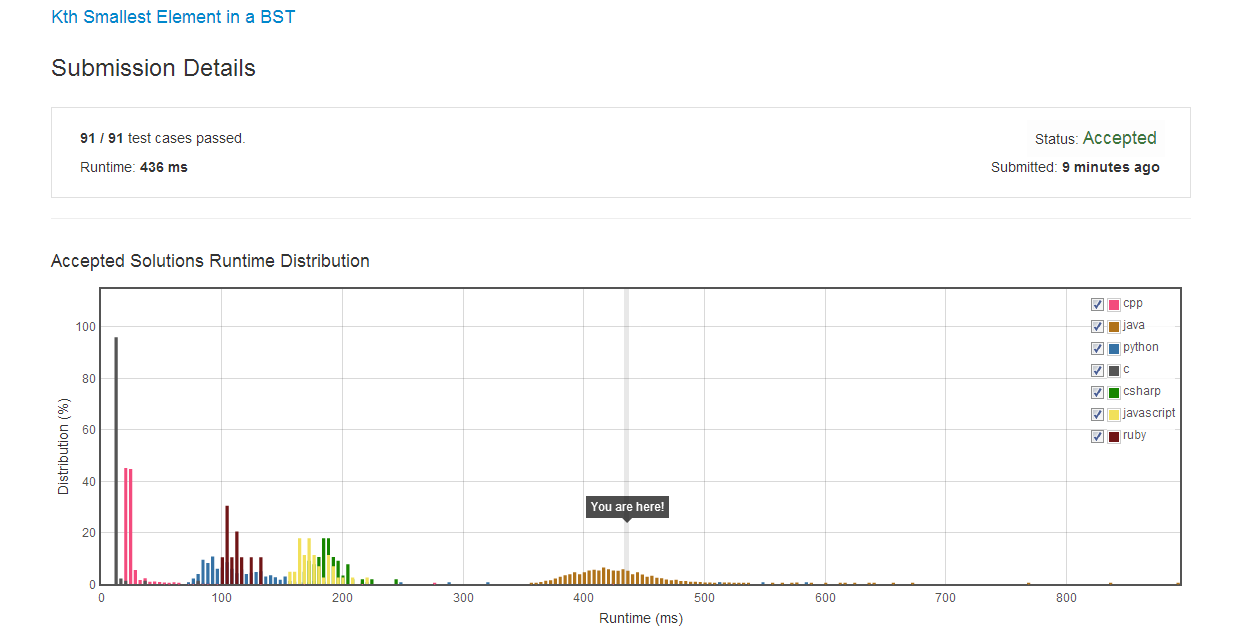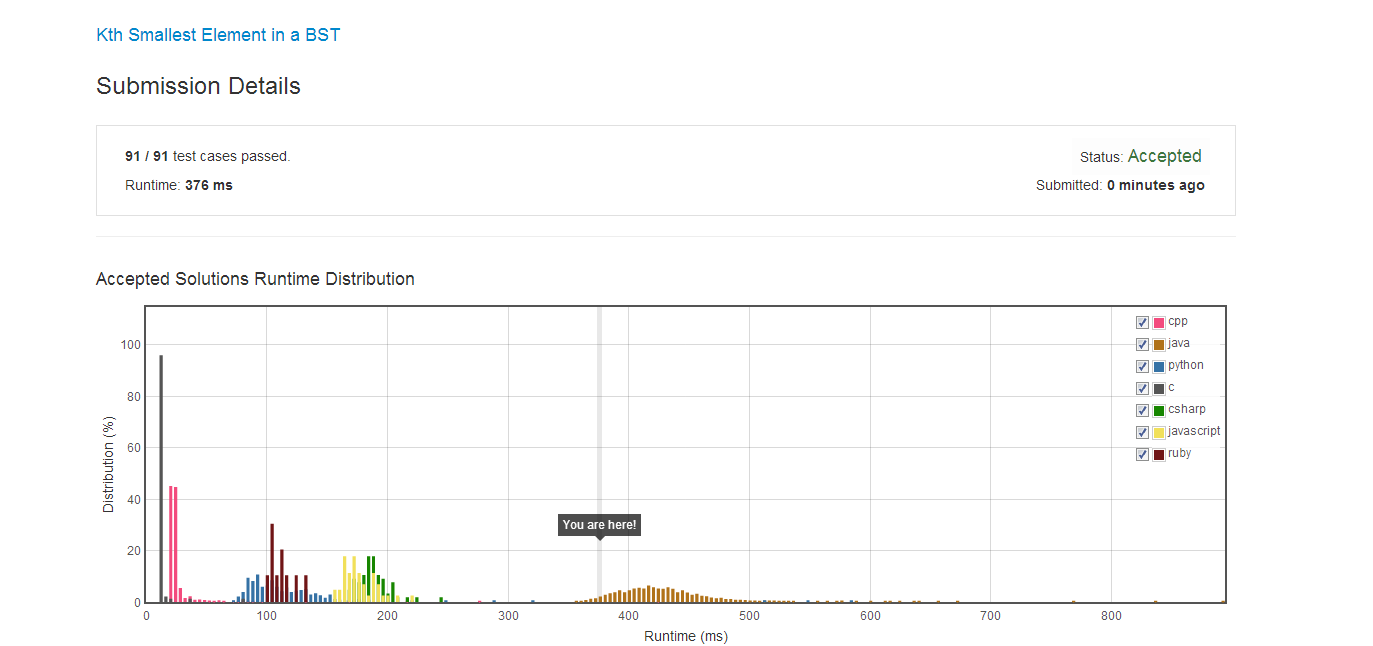Given a binary search tree, write a function kthSmallest to find the kth smallest element in it.
Note:
You may assume k is always valid, 1 ≤ k ≤ BST's total elements.
Follow up:
What if the BST is modified (insert/delete operations) often and you need to find the kth smallest frequently? How would you optimize the kthSmallest routine?
代码1:
/**
* Definition for a binary tree node.
* public class TreeNode {
* int val;
* TreeNode left;
* TreeNode right;
* TreeNode(int x) { val = x; }
* }
*/
public class Solution {
public int kthSmallest(TreeNode root, int k) {
int count =countNodes(root.left);
if(k<=count){
return kthSmallest(root.left,k);
}else if(k>count+1){
return kthSmallest(root.right,k-1-count);
}
return root.val;
}
public int countNodes(TreeNode n){
if(n==null) return 0;
return 1+countNodes(n.left)+countNodes(n.right);
}
}
运行结果:

代码2:中序遍历递归
/**
* Definition for a binary tree node.
* public class TreeNode {
* int val;
* TreeNode left;
* TreeNode right;
* TreeNode(int x) { val = x; }
* }
*/
public class Solution {
private static int number=0;
private static int count=0;
public int kthSmallest(TreeNode root, int k) {
count=k;
helper(root);
return number;
}
public void helper(TreeNode n){
if(n.left!=null) helper(n.left);
count--;
if(count==0){
number=n.val;
return;
}
if(n.right!=null) helper(n.right);
}
}
运行结果:

代码3:中序遍历迭代
/**
* Definition for a binary tree node.
* public class TreeNode {
* int val;
* TreeNode left;
* TreeNode right;
* TreeNode(int x) { val = x; }
* }
*/
public class Solution {
public int kthSmallest(TreeNode root, int k) {
Stack<TreeNode>st=new Stack<>();
while(root!=null){
st.push(root);
root=root.left;
}
while(k!=0){
TreeNode n=st.pop();
k--;
if(k==0) return n.val;
TreeNode right=n.right;
while(right!=null){
st.push(right);
right=right.left;
}
}
return -1;
}
}
运行结果:

代码4:使用队列,中序遍历,存储起来,然后出队n个元素即可。
/**
* Definition for a binary tree node.
* public class TreeNode {
* int val;
* TreeNode left;
* TreeNode right;
* TreeNode(int x) { val = x; }
* }
*/
public class Solution {
private Queue<TreeNode> queue=new LinkedList<TreeNode>();
public int kthSmallest(TreeNode root, int k) {
inOrder(root);
TreeNode ret=null;
while(k>0){
ret=queue.poll();
k--;
}
return ret.val;
}
public void inOrder(TreeNode root){
if(root==null) return;
if(root.left!=null) inOrder(root.left);
queue.offer(root);
if(root.right!=null) inOrder(root.right);
}
}
运行结果:
